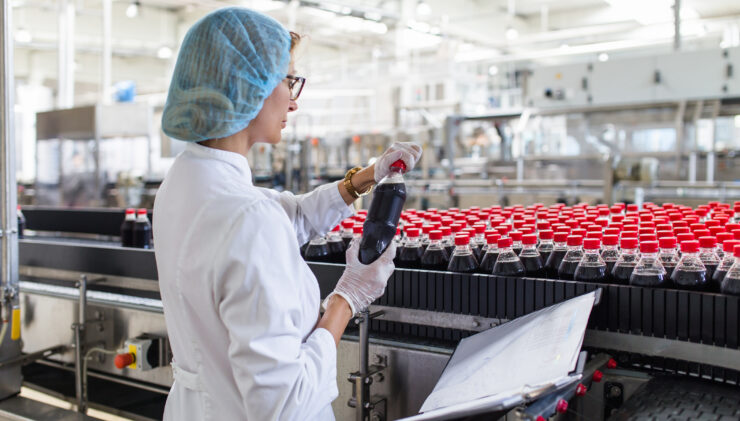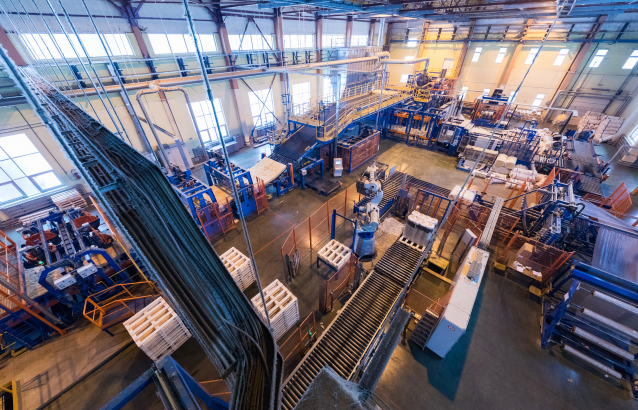 Managing Food Supply Chain Risks
Managing Food Supply Chain RisksBefore food makes it to consumers’ tables, it needs to go through a number of steps involving multiple companies. At every step of the process, there’s a chance for something to go wrong. Let’s take a look at some of the most common food supply chain risks and how food manufacturers and distributors should manage them.
Contamination
According to the Los Angeles Times, Rizo Lopez Foods Inc has had to recall all its packaged goods after Listeria monocytogenes was found in samples. CBS News says Sargento Foods has had to recall some of its products because they included cheese from Rizo Lopez Foods.
Contamination with bacteria, foreign objects, and other harmful substances may occur at any stage of the supply chain. Even contamination with other food ingredients, such as peanuts or eggs, may represent a safety hazard, due to food allergies from undeclared allergens. Contamination is usually accidental but may be deliberate. This may be the case with the recent recall involving high levels of lead in cinnamon applesauce pouches, which the FDA says may have been added for economic reasons.
Since contamination is a serious risk that may impact a company’s finances as well as public health and safety, good risk management is critical. Risk management steps may include:
- Implementing controls to prevent mold, bacteria, and cross-contamination.
- Vetting suppliers carefully to avoid disreputable sources.
- Conducting regular testing and quality control checks.
- Securing product liability and recall insurance and requiring partners to do the same.
Cyberattacks
Reuters says meatpacker JBS USA paid approximately $11 million to resolve a ransomware attack. CNN says Dole had to temporarily shut down operations in North America due to a cyberattack.
Cyberattacks against food manufacturers are common. In fact, Dragos identified manufacturing as the most targeted industry and food and beverage manufacturers as the most targeted subsector for ransomware.
Since cyberattacks may lead to major direct and indirect costs, risk prevention is critical. This may include:
- Implementing best practices for secure computer systems and networks.
- Training workers on how to avoid phishing and other social engineering scams.
- Verifying that vendors and partners are also using strong cybersecurity measures.
- Securing cyber insurance.
Theft
CargoNet reported that cargo thefts increased by 59% year over year in the third quarter of 2023. An expert from Travelers told FreightWaves that he expects cargo theft rates to continue to increase in 2024. Food and beverage cargo has been a top target along with electronics and household goods.
In some cases, criminals use cyber tactics to steal shipments. According to CISA and the FBI, criminals have used business email compromise tactics to steal shipments of food.
Several practices may help shield food manufacturers and distributors from theft losses, including:
- Considering whether different routes or modes of transportation may be safer.
- Implementing verification protocols to prevent shipment diversion tactics.
- Securing insurance for cargo.
Transportation Incidents
According to WINK News, a semi-truck spilled 40,000 pounds of raw chicken onto an interstate in Florida after a crash. The driver appeared to have experienced a medical issue and was taken to the hospital. In another incident, Food & Wine says a truckload of nacho cheese spilled onto an Arkansas highway.
Whether they’re due to a train derailment, truck collision, or shipping disaster, transportation incidents often result in destroyed food shipments or delays.
Food manufacturers and distributors should take steps to guard against these risks, such as by:
- Promoting driver safety.
- Monitoring for inclement weather and other hazards and rerouting as needed.
- Securing insurance for their cargo.
Shortages and Price Fluctuations
During the COVID-19 pandemic, many companies encountered supply chain snags and severe price fluctuations as lockdowns impacted various parts of the globe. Even outside of pandemics, these issues may impact food manufacturers.
When your food supply chain is complex, issues on the other side of the country – or even on the other side of the world – may cause problems for your operations. For example, if your only sugar supplier is in Florida, a major hurricane in Florida may make it impossible for you to secure the sugar you need on schedule. You may also end up paying higher prices for sugar.
Food manufacturers can reduce their risks by building supply chain resilience, such as with the following tactics:
- Sourcing critical supplies from multiple suppliers. If one supplier increases its price or experiences delays, you’ll be able to switch to a different supplier.
- Creating business continuity plans that cover supply chain disruption.
Insurance is a critical part of managing food supply chain risks. Heffernan Insurance Brokers offers insurance designed for the food sector, including motor truck cargo, warehouse legal liability, product contamination, and equipment breakdown. Learn more.


